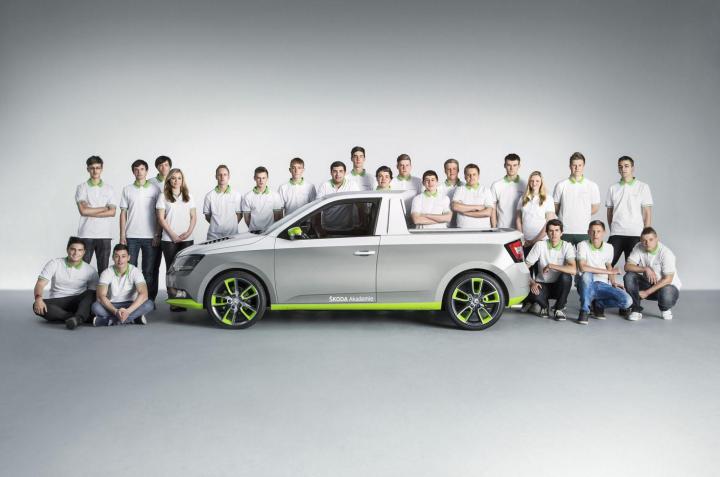
The FUNstar is almost identical to the standard Fabia from the tip of the front bumper to the B-pillar. Beyond that, the apprentices have chopped off several feet of sheet metal, welded in the rear doors and sealed off the passenger compartment in order to create a pint-sized pickup with a tiny stainless steel-lined bed. The Fabia’s hatch has been cut in half and turned into a tailgate.
The concept further stands out from the Fabia thanks to a specific front bumper, bright green trim around the radiator grille, dark green LED daytime running lights, and a custom hood fitted with a pair of vents. 18-inch alloy wheels sourced from the regular-production Octavia RS sport sedan do a better job of filling the wheel arches than the Fabia’s stock steelies.
Skoda has not published pictures of the FUNstar’s interior but it promises the pickup is equipped with a sports steering wheel, bucket seats, a sprinkling of white and silver trim pieces that echo the two-tone paint job, and an insanely powerful 1,400-watt sound system.
Mechanically, the FUNstar packs slightly more grunt than the standard Fabia thanks to a Volkswagen-sourced 1.2-liter four-cylinder TSI engine that generates 120 horsepower. The four-banger spins the front wheels via a seven-speed dual-clutch transmission controlled by shift paddles.
Like most of the wild concept cars that are presented every year at the Wörthersee show, the Skoda FUNstar will remain a one-off model destined to spend the rest of its life in a warehouse or, at best, a museum.



